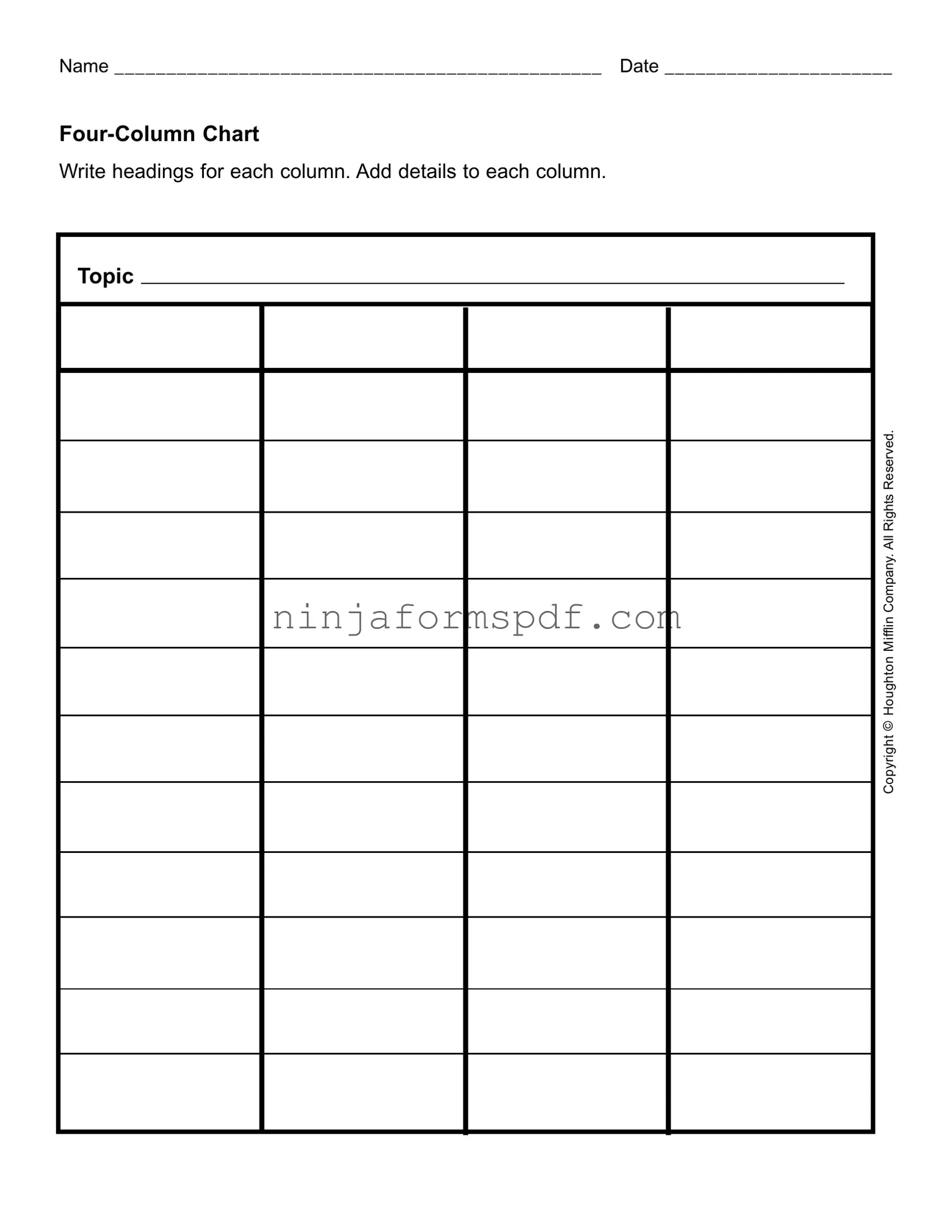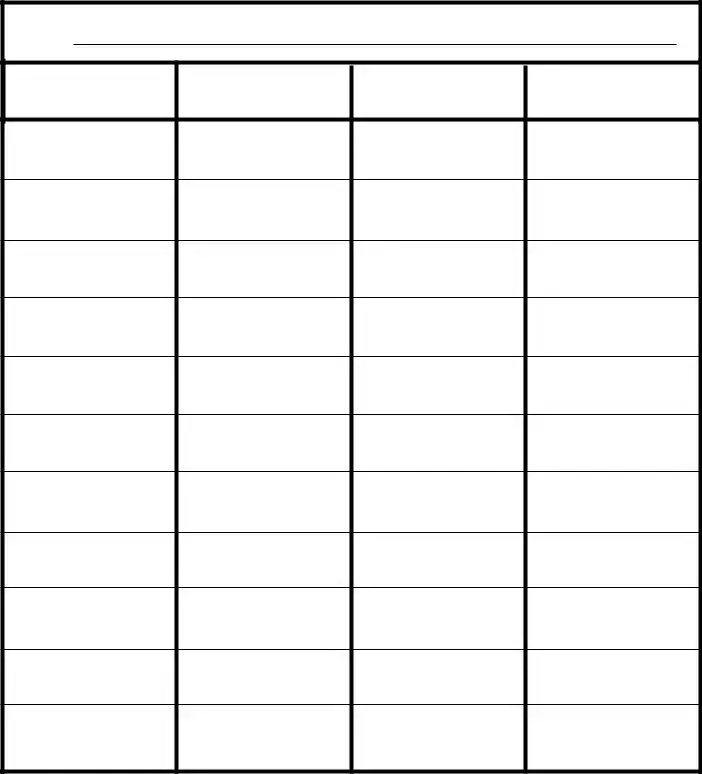What is a Four Column Chart and how is it used?
A Four Column Chart is an organizational tool that helps individuals to visually arrange and compare information across four distinct categories. Users can write headings for each of the columns to categorize the type of information or data they aim to document. This tool is particularly useful for tasks such as data analysis, planning, summarizing reading material, comparing and contrasting items, or organizing thoughts and observations systematically.
Can I customize the headings of each column in the Four Column Chart?
Yes, the Four Column Chart is designed for flexibility, allowing you to customize the headings based on your specific needs or the task at hand. Whether it’s for academic purposes, business analysis, or personal organization, you can tailor the column headings to suit the nature of the information you're gathering or comparing.
Is the Four Column Chart suitable for team collaborations or group projects?
Absolutely. The Four Column Chart can serve as an effective collaboration tool for teams and groups. It provides a structured layout that teams can use to organize ideas, delegate tasks, set project timelines, or categorize resources. It's an excellent way to ensure everyone is aligned and that information is clearly laid out and accessible to all members of the group.
How might students benefit from using the Four Column Chart?
Students can use the Four Column Chart for a variety of academic tasks. It can aid in note-taking by organizing key information into categories, planning essays or projects by outlining details for each section, studying by summarizing topics and details, and comparing themes or characters in literature. Its structured format can help students clarify their thoughts and improve their ability to retain and recall information.
What kind of details can be added to each column?
The details you add to each column should correspond to the headings and the purpose of the chart. This could range from simple lists, such as tasks or items, to more complex information including dates, descriptions, statistical data, or qualitative observations. The key is to ensure that the information is relevant to the column’s heading and that it contributes to the overall objective of using the chart.
How does copyright affect the use or distribution of the Four Column Chart template?
The notice "Houghton Mifflin Company. All Rights Reserved. Copyright ©" signifies that the Four Column Chart template is a copyrighted work owned by Houghton Mifflin Company. The use or distribution of this template, either in its original form or any substantially similar form, without permission could infringe on the copyright. Users should seek permission from the copyright holder for any use beyond personal or educational non-commercial purposes.
Can the Four Column Chart be adapted for digital use?
Yes, the Four Column Chart can be adapted for digital use very effectively. Digital tools and applications such as spreadsheet software, word processors, or specialized organizational apps can be used to recreate the chart’s format. This adaptation can enhance collaboration through real-time editing, ease of sharing, and the ability to integrate with other digital tools and platforms. It’s a productive way to leverage technology for organizational efficiency.
Are there any limitations to what can be compared or organized using the Four Column Chart?
While the Four Column Chart is a versatile tool, it does have limitations, especially when dealing with highly complex or multi-dimensional data sets. It is most effective for comparing or organizing information that can be categorized into four distinct groups. For information that requires more nuanced comparison or involves more categories, other organizational tools might be more suitable.
Where can I find examples or templates of the Four Column Chart to get started?
Examples and templates of the Four Column Chart can be found in various educational and professional development resources, both online and in print format. Educational websites, productivity software, and organizational toolkits often include templates or examples that can serve as a starting point. Additionally, contacting educational professionals or searching academic resources can also yield useful templates and examples to help you begin.

